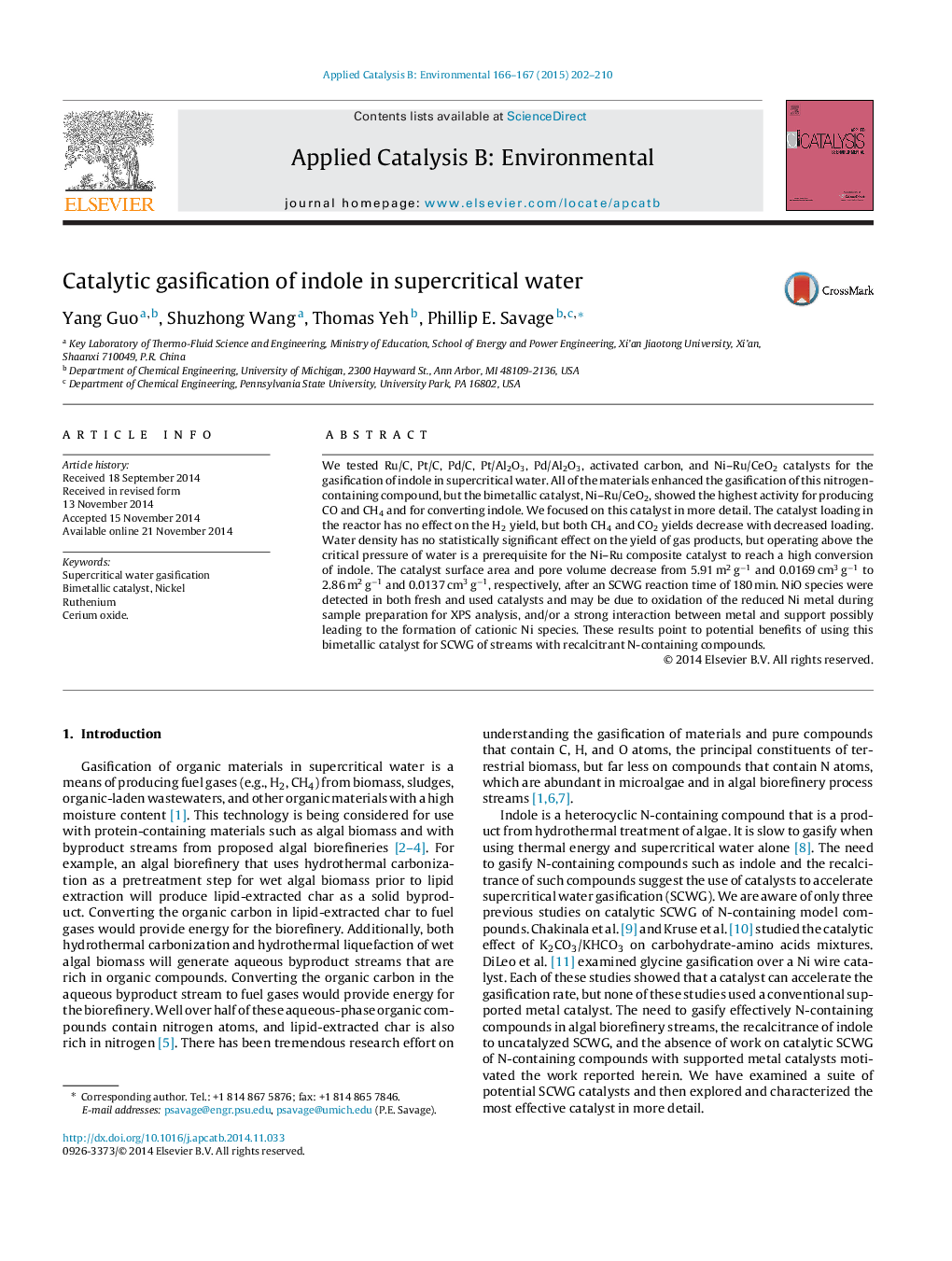| Article ID | Journal | Published Year | Pages | File Type |
|---|---|---|---|---|
| 45711 | Applied Catalysis B: Environmental | 2015 | 9 Pages |
•The first report on supercritical water gasification of a N-containing compound over supported metal catalysts.•Demonstrated efficacy of Ni–Ru/CeO2 bimetallic catalysts for supercritical water gasification of indole.•Determined influences of operating conditions and catalyst composition on gas and liquid product distribution.
We tested Ru/C, Pt/C, Pd/C, Pt/Al2O3, Pd/Al2O3, activated carbon, and Ni–Ru/CeO2 catalysts for the gasification of indole in supercritical water. All of the materials enhanced the gasification of this nitrogen-containing compound, but the bimetallic catalyst, Ni–Ru/CeO2, showed the highest activity for producing CO and CH4 and for converting indole. We focused on this catalyst in more detail. The catalyst loading in the reactor has no effect on the H2 yield, but both CH4 and CO2 yields decrease with decreased loading. Water density has no statistically significant effect on the yield of gas products, but operating above the critical pressure of water is a prerequisite for the Ni–Ru composite catalyst to reach a high conversion of indole. The catalyst surface area and pore volume decrease from 5.91 m2 g−1 and 0.0169 cm3 g−1 to 2.86 m2 g−1 and 0.0137 cm3 g−1, respectively, after an SCWG reaction time of 180 min. NiO species were detected in both fresh and used catalysts and may be due to oxidation of the reduced Ni metal during sample preparation for XPS analysis, and/or a strong interaction between metal and support possibly leading to the formation of cationic Ni species. These results point to potential benefits of using this bimetallic catalyst for SCWG of streams with recalcitrant N-containing compounds.
Graphical abstractFigure optionsDownload full-size imageDownload as PowerPoint slide
